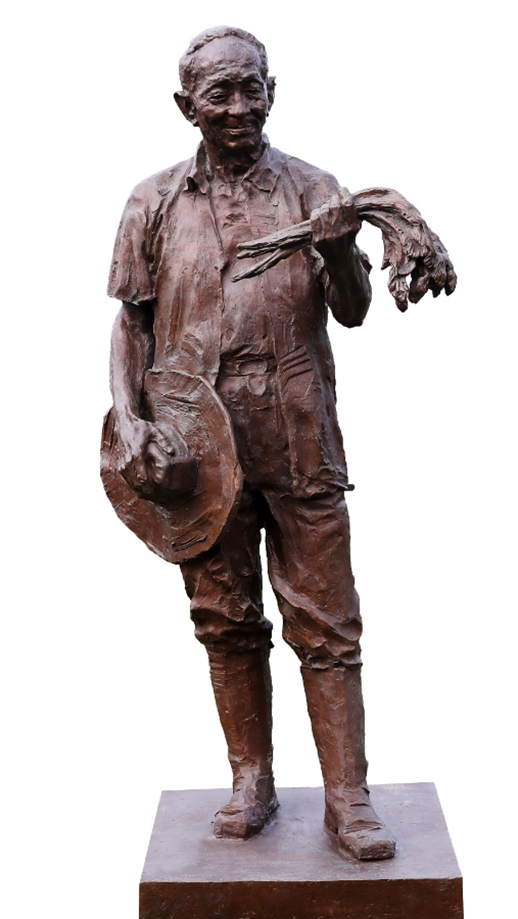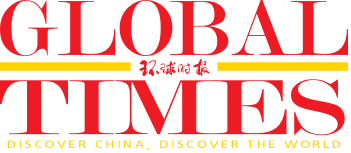
Yuan Longping, a sculpture created by Wu Weishan Photo: Courtesy of the National Art Museum of China
A sculpture of Yuan Longping, one of China's most revered scientists and "Father of Hybrid Rice," created by renowned Chinese sculptor and director of the National Art Museum of China Wu Weishan, has been unveiled at the Georgofili Academy in Florence, Italy.
As one of the world's oldest institutions dedicated to agricultural and natural science research, the academy, founded in 1753, has for the first time permanently collected a work by a contemporary Chinese artist. This donation coincides with the 55th anniversary of the establishment of diplomatic relations between China and Italy, underscoring the two nations' ongoing cooperation in science, humanities and arts, as well as Italy's academic and artistic circles' high recognition of the caliber of contemporary Chinese art and their sincere respect for the global contributions of Chinese scientists.
The unveiling ceremony was held at the academy's headquarters in downtown Florence, chaired by Massimo Vincenzini, president of the Georgofili Academy. Attending the event were Chinese Consul General in Florence Yin Qi, President of Sculpture of the Accademia delle Arti del Disegno Antonio di Tommaso, President of the Italy-China Contemporary Art Association Qiu Yi, and experts, scholars and cultural figures from multiple Italian research institutions and art academies.
Delivering a video speech, Wu recounted his original impetus for creating the sculpture: "Yuan took the soil as his responsibility and solved the problem of feeding hundreds of millions with a single seed. I created this sculpture to pay tribute to this Chinese scientist who sowed science upon the earth. I also hope it will take root in this 270-year-old hall of science, becoming a dialogue that transcends borders, takes root in the earth, and celebrates life."
Born in 1930, Yuan succeeded in cultivating the world's first high-yield hybrid rice strain in 1973, which was later grown on a large scale in China and other countries to substantially raise output. He passed away in 2021 at the age of 91.
In Wu's view, art and science are inherently interconnected - one seeks truth, and the other carries spirit. Yuan's scientific exploration and humanitarian spirit, he noted, resonate deeply with the ideal world artists strive to portray.
As one of contemporary China's most internationally influential artists, Wu has long dedicated himself to constructing a modern Chinese expressive system through sculptures. Using traditional materials like bronze and marble as mediums, he integrates aesthetic concepts from Chinese calligraphy, poetics and philosophy to create an artistic language that blends Eastern charm with a global perspective. His works are not only widely displayed in major museums and public squares across China but also collected by top art institutions in France, Italy, Germany, Japan, Greece and other nations, earning him the title "Sculptor of the Times."
"Everyone in agricultural science knows Yuan Longping," said Massimo Vincenzini, president of the Georgofili Academy.
"He was an outstanding scientist who made a profound impact in the global fight against hunger."
Wu masterfully captured the scientist's spiritual essence, endowing the sculpture with both form and soul, added Vincenzini.
Chinese Consul General in Florence Yin Qi said the event symbolized cross-cultural dialogue, while coinciding with the first International Day for Dialogue among Civilizations.
"The unveiling of this sculpture represents not only a fusion of art and agriculture but also the shared reverence of our two peoples for the spirit of scientists. This year marks the 55th anniversary of China-Italy diplomatic relations. We hope to build on this event to deepen cooperation between China, Italy and Europe across more fields, illuminating each other's paths and achieving mutual prosperity," said Yin.
Antonio di Tommaso spoke highly of Wu's personal charisma and artistic achievements, comparing him to Marino Marini and Giacomo Manzù - two of Italy's most celebrated figurative sculptors of the early 20th century. He emphasized that Wu's explorations in ideological depth and formal language had reached the same profound humanistic dimensions as these masters.
Qiu Yi, a curator and president of the Italy-China Contemporary Art Association, noted that "Yuan embedded a rice seed into the soil and entrusted the livelihoods of billions to the stars - he bridged the question of 'survival' with the realm of 'existence.'"
He added that the sculpture of Yuan transcends its role as a work of art, serving as a profound dialogue between China and Italy in the spheres of humanity, science and the spirit.
The unveiling of the sculpture not only marks a significant cultural event for the 55th anniversary of China-Italy diplomatic ties but also represents a profound presentation of Chinese art and scientific spirit within the global civilization framework. Through this work, China and Italy have achieved deeper communication and consensus in culture, science and technology, and humanistic values.




